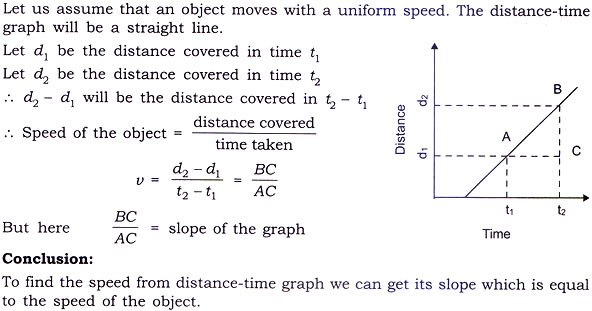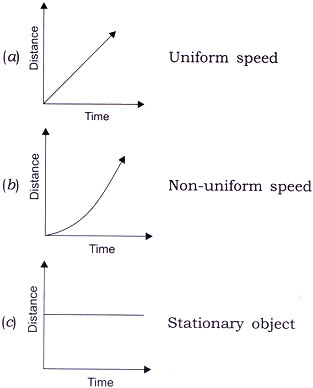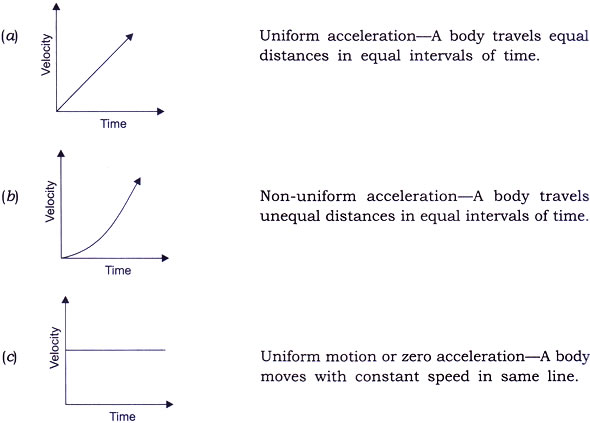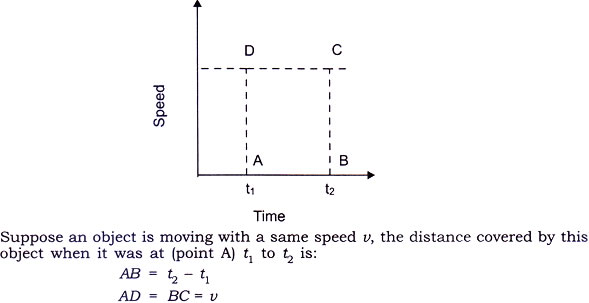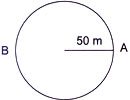Question: It took 2s after lighting for the sound of thunder to reach you. How far did the lighting stuck?
Answer: Speed of sound is 346 m/s in air.
Time = 2s
∴ Distance = ?
s = d/t
∴ d = s × t
= 346 × 2
= 692m
∴ The lightning struck 692m away.
Question: What conclusion do you draw about acceleration of the particle in motion from given velocity-time graphs.
Answer: (a) No acceleration
(b) Uniform acceleration
(c) Non-uniform acceleration
Question: Derive the equation for velocity-time relation (v = u + at) by graphical method.
Answer:
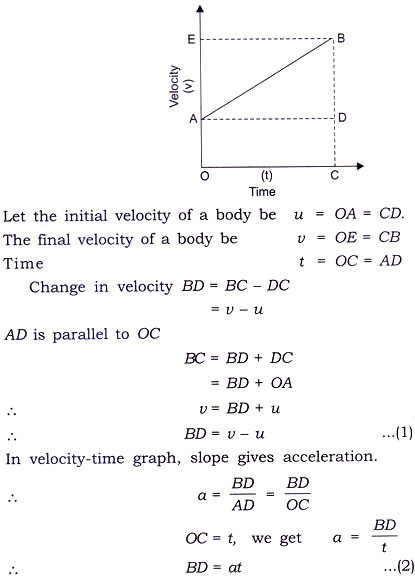
Substitute (2) in (1) we get.
BD = v – u
at = v – u
∴ v = u + at
Question: How can we get speed from distance-time graph?
Answer:
Question: Represent a graph that shows the following: (a) Uniform speed (b) Non-uniform speed (c) Stationary object
Answer: Time is taken on X-axis as it is independent quantity and all depended quantities are taken along Y-axis.
Question: Draw graph to show the following: (a) Uniform acceleration, (b) Non-uniform acceleration, (c) Uniform motion
Answer:
Question: How can you get the distance traveled by on object from its speed-time graph?
Answer:
Question: (1) What is the motion?
(2) State types of motion.
(3) Derive the unit for acceleration.
Answer:
- Motion: An object is said to be in motion when its position change with time. We describe the location of an object by specifying a reference point. Motion is relative.
- There are two types of motion: Uniform motion and non-uniform motion
(i) Uniform motion: When an object covers equal distances in equal intervals of time, it is said to be in uniform motion.
(ii) Non-uniform motion: Motion where object cover unequal distances in equal intervals of time. - Acceleration, ‘a‘ is change in velocity per unit time.
a = v – u/t = m/s/s
∴ a = m/s2
Question: (a) What is uniform circulation motion?
(b) An athlete runs on a circular track, whose radius is 50 m with a constant speed. It takes 50 seconds to reach point B from starting point A. Find
(i) the distance covered
(ii) the displacement
(iii) the speed.
Answer:
(a) When a body moves in a circular path with uniform speed, its motion is called uniform circular motion.
(b) Radius = 50 m
Time = 50 s
(i) The distance covered by an athlete A to B i.e., semicircle of the track
∴ circumference = 2πr
circumference-help = πr
= 22/7 × 50
distance = 157.14 m
(ii) Displacement from A – B is diameter AB
d = 2r
d = 2 × 50 = 100 m
(iii) Speed =?
Speed = Distance/time
= 157.14/50
= 3.142
∴ Speed = 3.142 m/s.
 Class Notes NCERT Solutions for CBSE Students
Class Notes NCERT Solutions for CBSE Students


